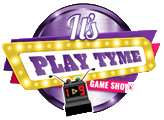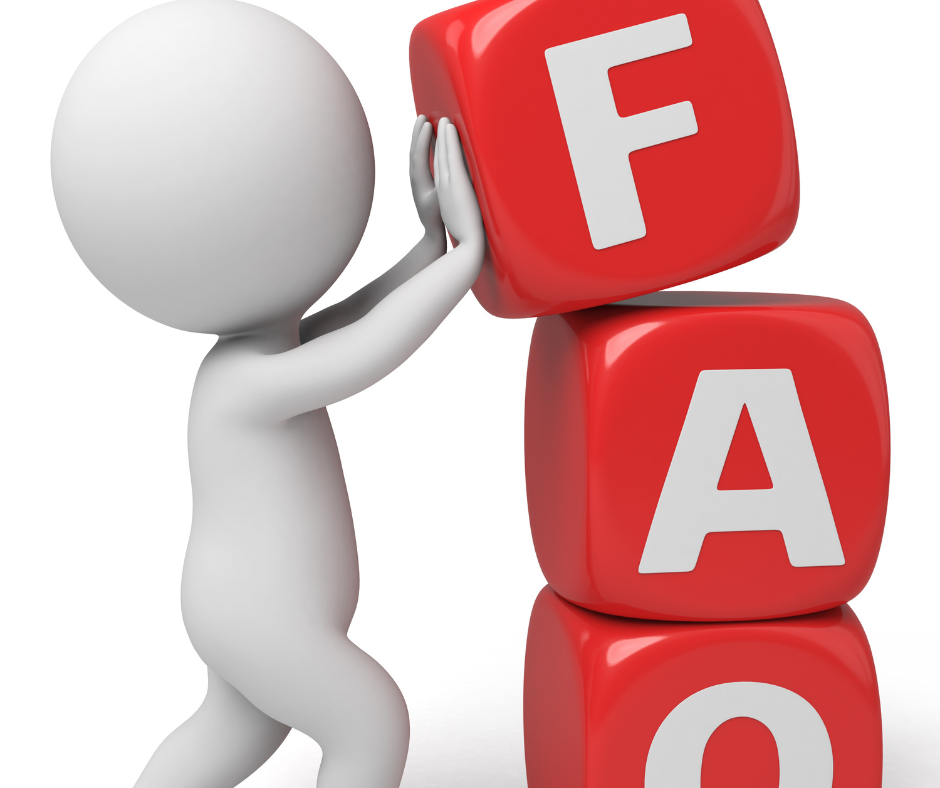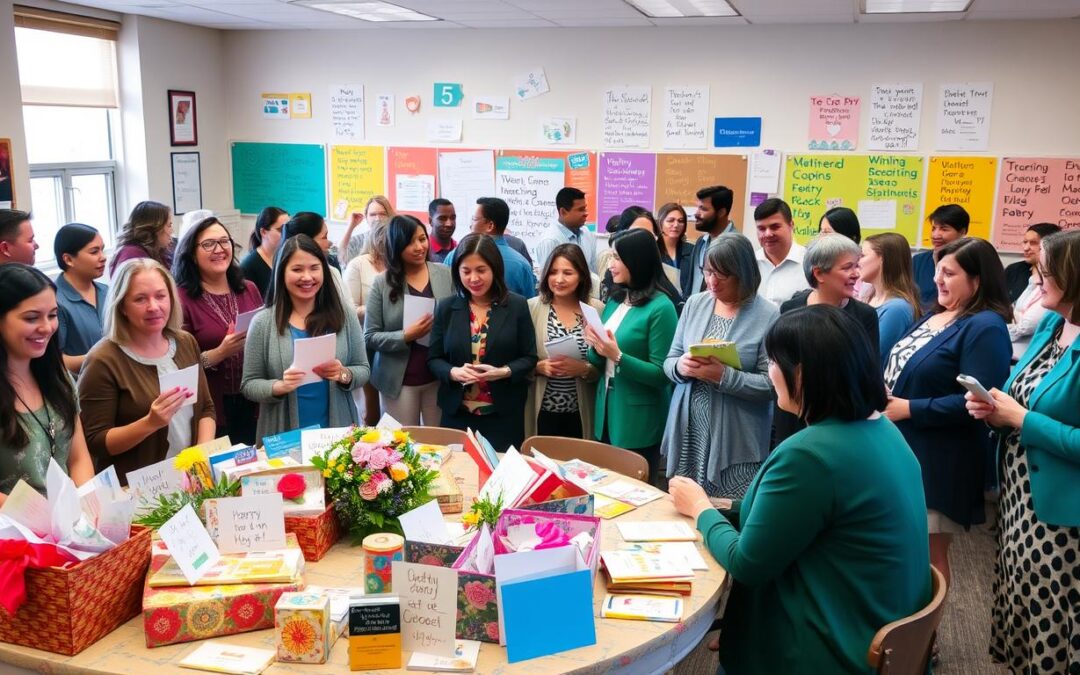
Team Building Trivia: Energize Your Group | Corporate Games | NJ, NYC. CT
What if your NJ or NYC team could boost morale by 73% in just 30 minutes? Sounds wild, but Gallup research backs it up: teams who engage in light, competitive activities like team building trivia show a huge spike in job satisfaction and problem-solving abilities.
Whether you’re leading a crew in Jersey City, Newark, Paramus, or right in the heart of Manhattan, trivia challenges that blend company culture with clever, customized questions are more than just fun—they’re strategic. Teams who laugh together through fast-paced games build stronger bonds and bounce back faster under pressure—23% faster, according to the Journal of Applied Psychology.
Looking for game-changing trivia questions tailored for corporate events in Bergen County, Hudson Yards, or anywhere in the NYC metro? Keep scrolling, we’ve got you.
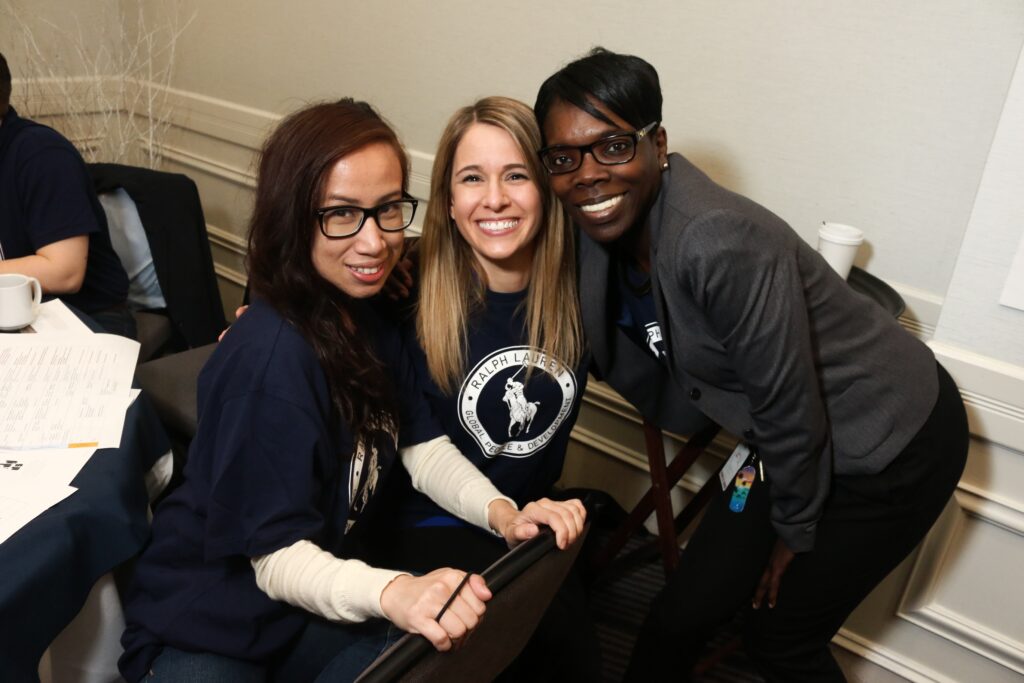
Key Takeaways
- Team building trivia is a powerful tool for improving team dynamics and overall productivity.
- Team building trivia can be adapted to suit a variety of workplace settings and objectives.
- Team building trivia promotes open communication, trust, and collaboration among team members.
- Including team-building activities and games in the workplace can help boost morale and create a positive work environment.
- Team building trivia is a fun and engaging way to get employees energized and working towards a common goal.
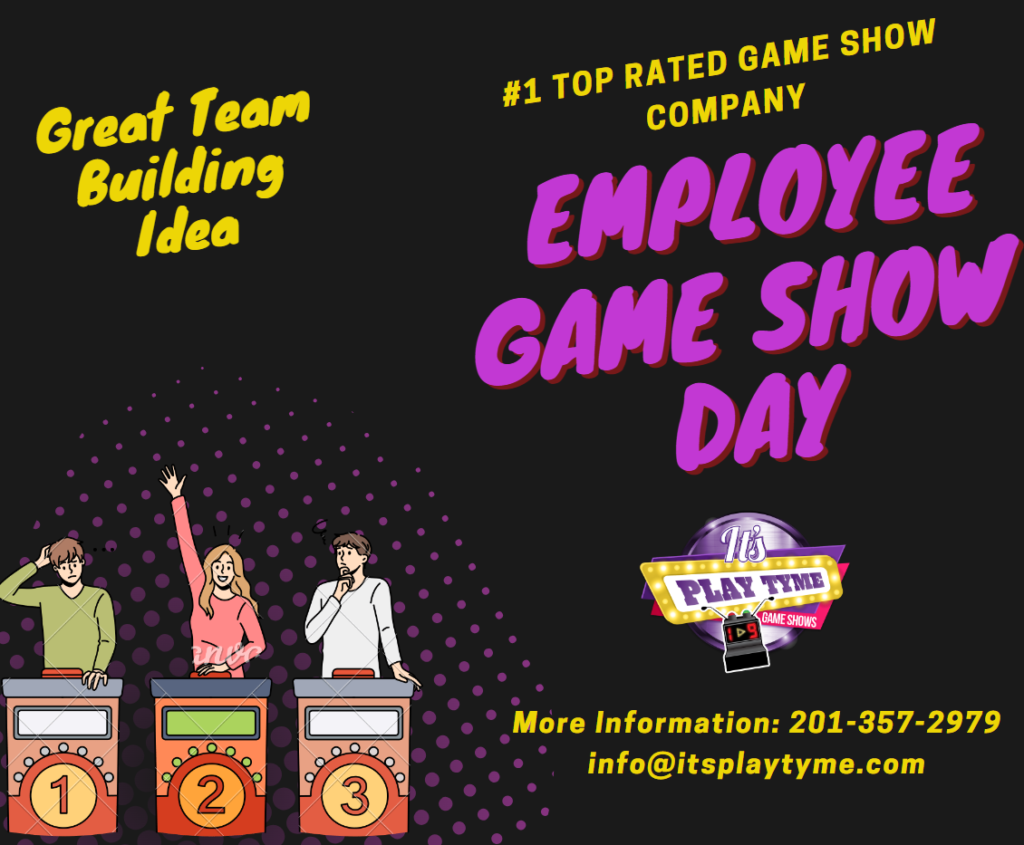
employee-engagement-game-show-idea
Book a Live Game Show Experience!
[Best Team Building Games - We Come to Your Location - 100% Satisfaction Guaranteed - Click Below - SERIOUS INQUIRIES ONLY]
Trivia to Enhance Collaboration and Morale
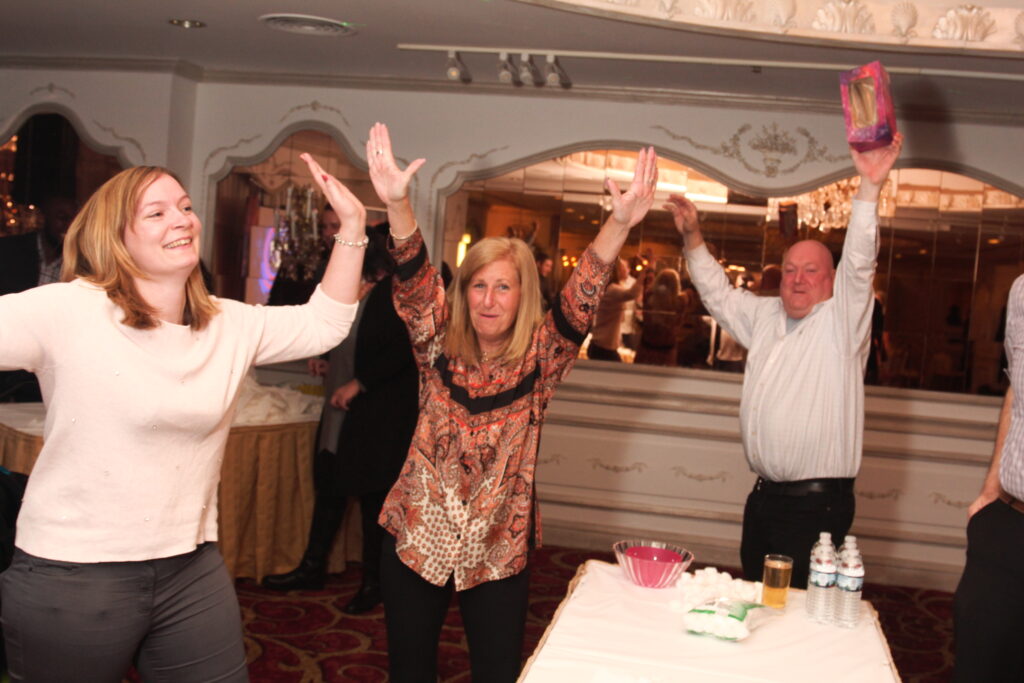
team-building-winners
Want to boost morale and collaboration in your New Jersey or NYC workplace? Team building trivia is a fast, fun way to bring your team together, whether you’re based in Newark, Jersey City, Paramus, or Midtown Manhattan.
These high-energy games spark communication, build trust, and create moments of connection that go beyond the boardroom. From outdoor scavenger hunts in local parks to indoor live trivia challenges, there’s something for every setting and team size.
Even virtual teams across NYC and the tri-state area can get in on the action with customized trivia that blends company culture and laughter, boosting morale without skipping a beat.
Breaking down workplace barriers starts with better teamwork—and trivia can lead the way. Whether your team is based in Hackensack, Brooklyn, or New Brunswick, engaging group activities help coworkers connect, collaborate, and support one another.
From problem-solving games to interactive team-building workshops, these experiences spark fresh energy and reduce silos across departments.
Incorporating fun, fast-paced activities like trivia showdowns into your NJ or NYC office culture boosts morale, strengthens communication, and inspires your people to show up as their best selves.
Find the Perfect Game Show for Your Team
Pick the Ideal Match for Your Team’s Unique Goals and Needs – Click Below
Virtual Team Building with Trivia
With the increasing popularity of remote work, it’s important to find ways to keep your team connected and engaged even when working from different locations.
Virtual team building is an effective way to promote collaboration and teamwork among remote team members.
Team building trivia can be adapted to virtual settings, allowing teams to engage in interactive games and activities that promote communication and collaboration.
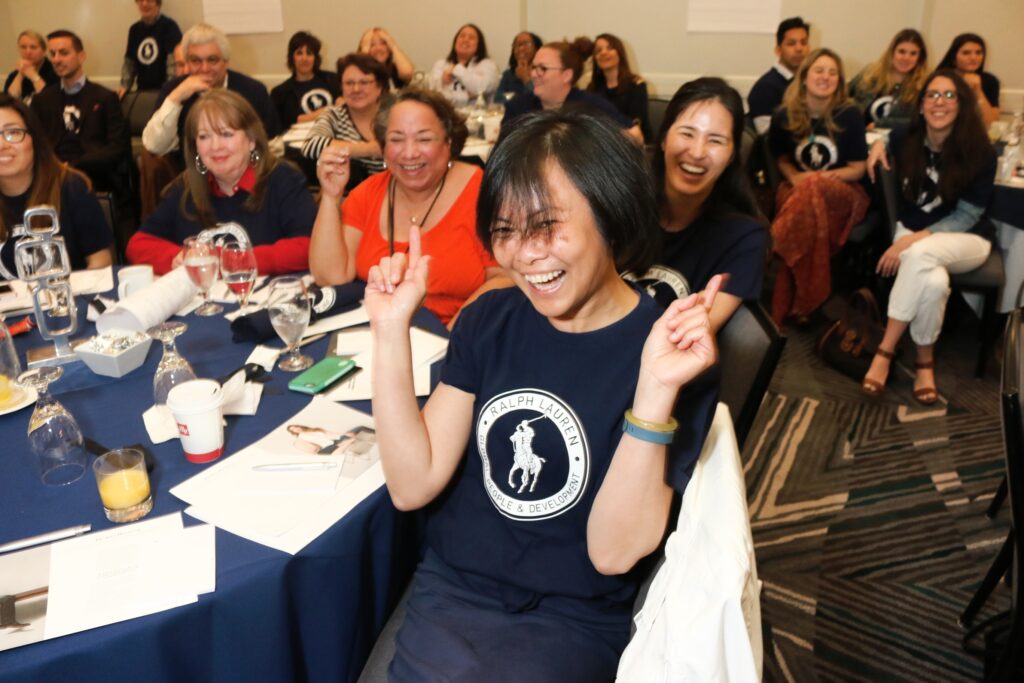
Team Morale – Employee Appreciation
Interactive Team Building Games
One great way to build connections and foster collaboration among remote teams is through interactive team-building games.
These games can be played virtually and adapted to various group sizes.
Some popular interactive team-building games that incorporate trivia include:
| Game | Description |
|---|---|
| Virtual Trivia Night | Host a trivia night over video call with questions tailored to your team’s interests |
| Online Scavenger Hunt | Create a scavenger hunt using virtual clues and questions |
| Collaborative Jeopardy | Use a collaborative online platform to play Jeopardy using questions related to your team’s work |
Strategies for Virtual Team Building
Aside from interactive team-building games, there are other strategies you can use to promote virtual team building. Some effective strategies include:
- Regular video calls for team meetings and check-ins
- Online team-building activities and icebreakers
- Virtual team building challenges, such as virtual escape room challenges
By incorporating these strategies into your virtual team-building efforts, you can foster collaboration and teamwork among remote team members, resulting in a more engaged and productive team overall.
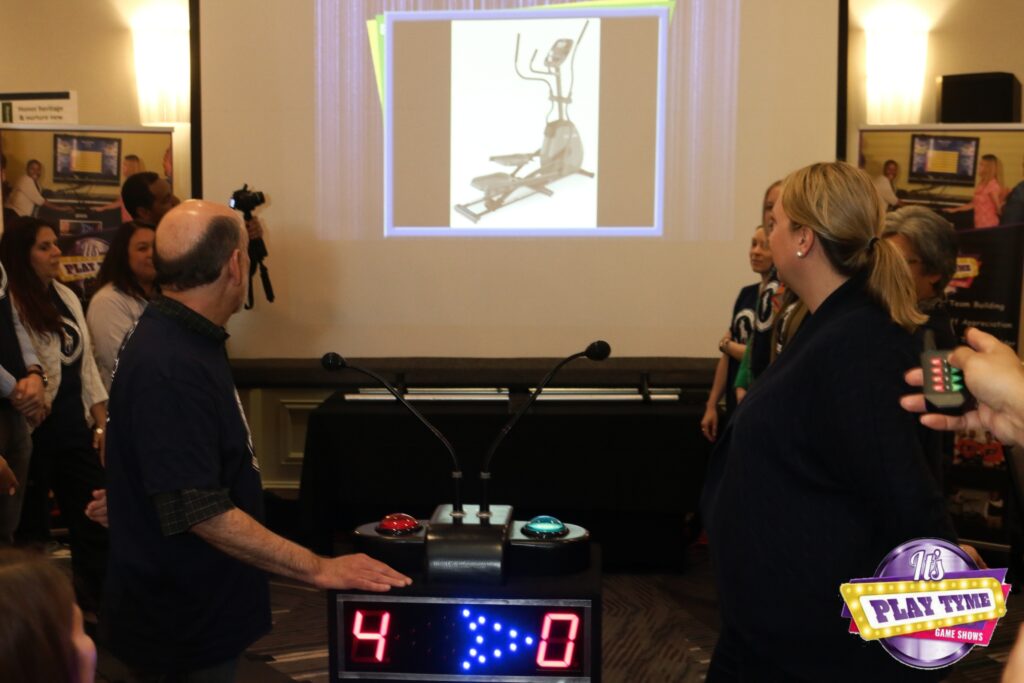
Igniting Healthy Competition – Game Show Challenges
When it comes to team-building activities, incorporating game show challenges is a great way to spark healthy competition and build camaraderie among team members.
By participating in team-building challenges, employees can push themselves outside their comfort zones and learn to work together in new ways.
This fosters cooperation, teamwork, and trust and helps build a more collaborative working environment.
Corporate team-building events can take the form of exciting outdoor adventures or engaging indoor activities that challenge employees both physically and mentally.
Consider hosting a team building challenge that requires collaboration and communication skills to complete successfully, like an escape room or treasure hunt.
These activities encourage employees to work together, helping to build bonds between co-workers while promoting a sense of shared achievement.
| Benefits of Team Building Challenges | Examples of Team Building Activities |
|---|---|
|
|
Incorporating team-building challenges into your corporate team building events can help to break down barriers between team members and promote a more positive working environment.
By encouraging healthy competition, boosting employee morale, and developing valuable skills, team building challenges can have a lasting impact on your team and organization.
Book a Live Game Show Experience!
[Best Team Building Games - We Come to Your Location - 100% Satisfaction Guaranteed - Click Below - SERIOUS INQUIRIES ONLY]
Exploring Team Building Ideas
Are you looking for exciting team-building ideas that will engage your team and promote collaboration? Look no further! Here are some engaging team activities you can tailor to suit your team’s interests and objectives.
| Activity | Description |
|---|---|
| Escape Rooms | Work together to solve puzzles and escape a locked room within a set time limit. This encourages communication and teamwork, as each member’s skills are put to the test. |
| Scavenger Hunt | This classic activity requires teamwork and problem-solving skills, as teams race to complete a list of tasks or find hidden items in a set amount of time. |
| Charitable Work | Participating in community service or charitable work as a team can foster a sense of purpose and empathy, while also building teamwork skills. |
| Cooking Challenge | Divide your team into small groups and challenge them to cook a meal with specific ingredients or guidelines. This fun and engaging activity encourages problem-solving and teamwork, while also providing a delicious reward! |
Remember, the key to successful team building is to have fun while fostering a sense of unity and collaboration among team members.
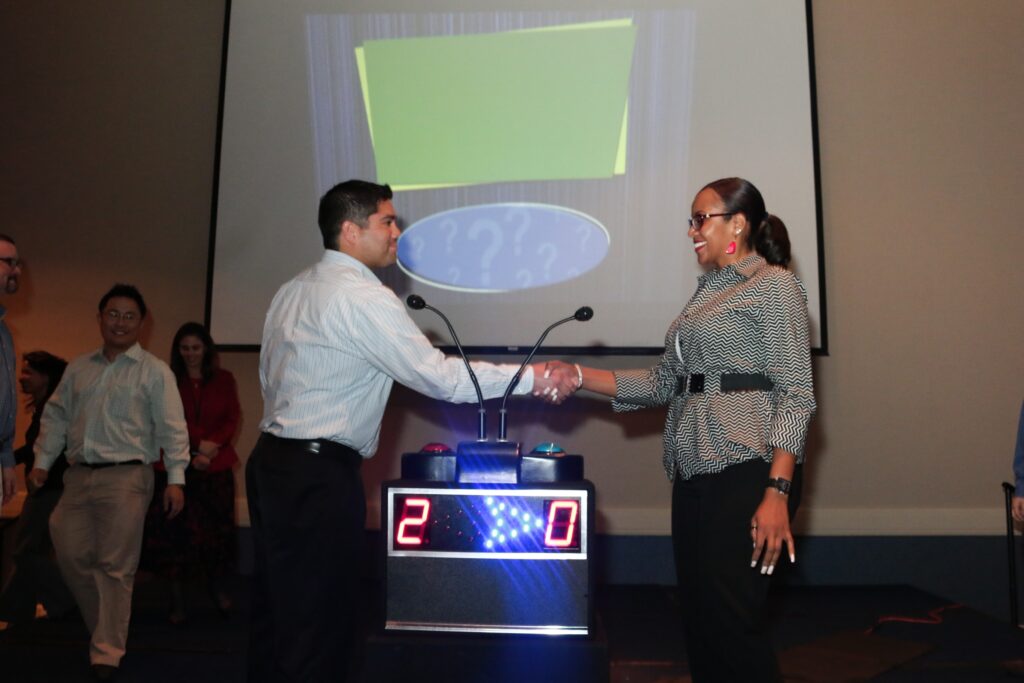
fun-trivia-for-adults – engaging activities
Building Stronger Connections
Stronger teams start with stronger connections—and trivia helps build them fast. Whether you’re planning an event in Paramus, Morristown, or Brooklyn, the right icebreakers set the tone for authentic teamwork. From quick games like Two Truths and a Lie to immersive challenges like Escape Rooms, these activities spark real conversation, trust, and collaboration.
Team building trivia is especially effective—it’s inclusive, fast-paced, and full of those unexpected “aha!” moments that help coworkers relate beyond their roles. When NJ and NYC companies incorporate these playful experiences into the culture, they build teams that actually want to work together.
Boosting Employee Engagement
Engaging team-building activities can significantly improve employee engagement in the workplace.
Corporate team-building sessions that are interactive, exciting, and meaningful can help employees feel more invested in their work and strengthen their sense of belonging to their organization.
One way to achieve this is through team-building trivia, which encourages employees to interact and collaborate with each other while having fun.
Whether virtual or in-person, team-building activities can be customized to fit the unique needs and objectives of your team.
Innovative Ideas for Engaging Team Building Activities
Here are some innovative ideas to make your team-building activities more engaging:
- Create challenges that require employees to work together to accomplish a specific goal
- Have an office scavenger hunt to help employees get to know their workplace better
- Organize a talent show where employees can showcase their skills and talents
The Benefits of Corporate Team Building
Corporate team building is an effective way to improve employee engagement, collaboration, and overall workplace morale.
By creating engaging team-building activities, companies can foster a positive work culture and create lasting memories among employees.
To achieve this, it’s important to plan team-building sessions that are tailored to your team’s interests and objectives.
This can help ensure that employees remain engaged and enthusiastic throughout the experience.
“Team building events are a fun way to get to know your colleagues outside of the workplace.
It helps build stronger connections and fostering a sense of community within the workplace.” – Rachel Smith, HR Manager at Acme Corporation
By boosting employee engagement through engaging team-building activities, companies can create a more productive and enjoyable work environment for their employees.
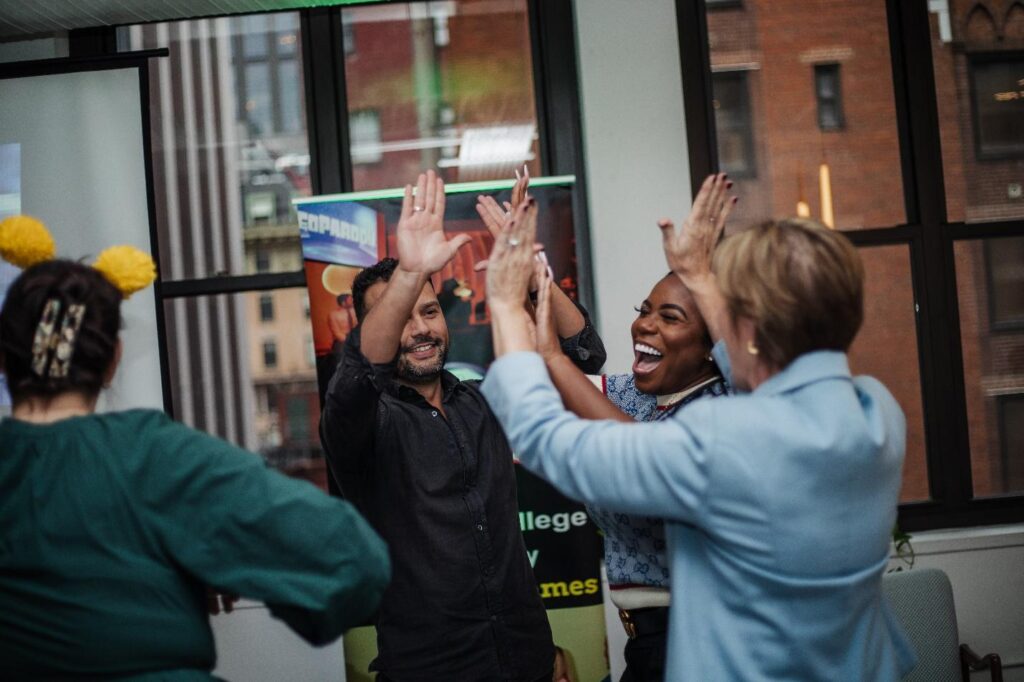
Strengthen Bonds
Spicing Up the Workplace
Team building doesn’t have to be all work and no play. With fun team-building exercises and games, you can inject excitement and creativity into the workplace environment.
Not only do these activities help break the monotony, but they also create a positive work culture where employees feel more engaged and motivated to succeed.
One of the best ways to incorporate team-building games into the workplace is through trivia. Not only is it fun and interactive, but it also helps employees learn more about each other and the company they work for.
“Our team loves playing trivia games during our weekly team building sessions.
It’s a great way to relax and have fun while still promoting teamwork and collaboration.” – John Smith, Human Resources Manager at XYZ Company
Some examples of team-building games include:
| Game | Description |
|---|---|
| Office Olympics | A day-long event where teams compete against each other in various games and challenges, such as chair racing and paperclip archery. |
| Escape Room | Teams work together to solve puzzles and clues to “escape” a themed room within a certain time limit. |
| Build a Tower | Using only a set of materials, teams compete to see who can build the tallest and sturdiest tower within a given time frame. |
Remember, the key to successful team building is finding activities that are not only enjoyable but also promote collaboration and teamwork.
Incorporating fun team-building exercises into your workplace can re-energize your team, increase employee engagement, and ultimately lead to a more productive and creative work environment.
Office Trivia – Creating Lasting Memories
Team-building activities are essential to creating lasting memories and building strong bonds between team members.
Engaging team-building activities like team building trivia are an excellent way to foster collaboration, trust, and open communication.
When planning team-building activities, it’s crucial to consider the interests and personalities of your team members to ensure maximum participation and engagement.
The more engaged your team is in the activities, the more meaningful the experiences will be, and the stronger the bonds will become.
One way to create lasting memories is to plan team-building activities that take place outside of the workplace.
Consider activities like outdoor retreats, group hikes, or even volunteer opportunities.
Not only will these activities promote teamwork and collaboration, but they will also provide an opportunity for your team to bond and create memories outside of the office.
Remember, the key to creating lasting memories is to plan engaging team-building activities that foster communication, collaboration, and positive energy.
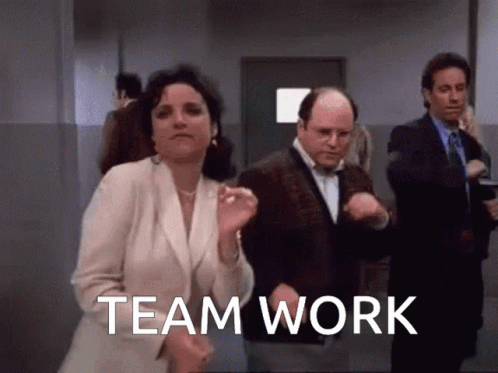
Teamwork Makes The Dream Work
Example: Team Building Activity Ideas
| Activity | Description |
|---|---|
| Escape Room Challenge | Work together to solve puzzles and escape a locked room in a set amount of time. |
| Scavenger Hunt | Divide into teams and compete to find clues and complete challenges around the city or office. |
| Paint and Wine Night | Create artwork while enjoying a glass of wine and bonding with your team. |
| Corporate Social Responsibility Event | Volunteer as a team to give back to the community through a charity event or service project. |
These are just a few examples of engaging team-building activities that can create lasting memories and strengthen bonds between team members.
Be creative and tailor your activities to the unique needs and interests of your team for maximum impact.
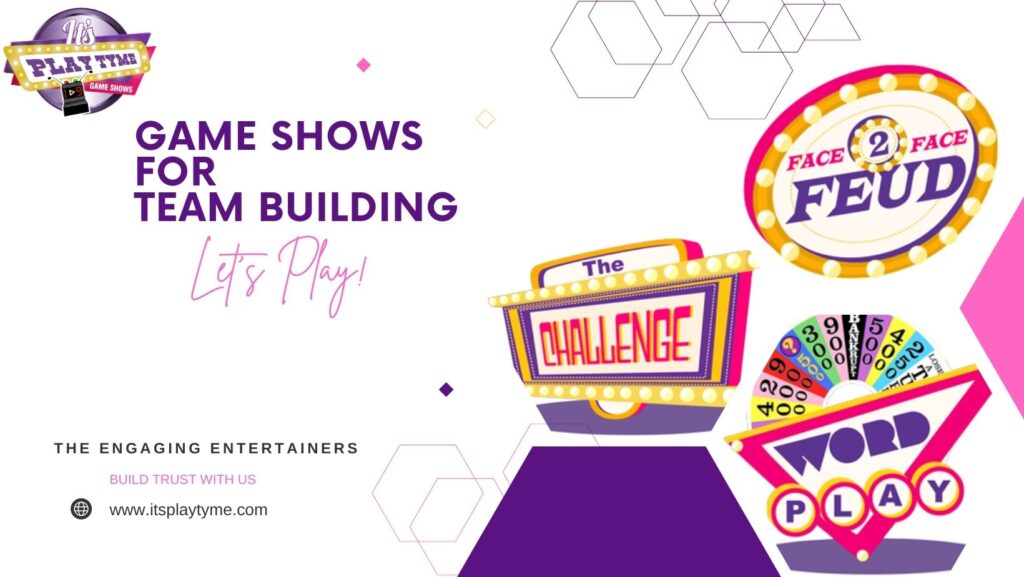
game-shows-for-team-building-NYC-METRO
Book a Live Game Show Experience!
[Best Team Building Games - We Come to Your Location - 100% Satisfaction Guaranteed - Click Below - SERIOUS INQUIRIES ONLY]
